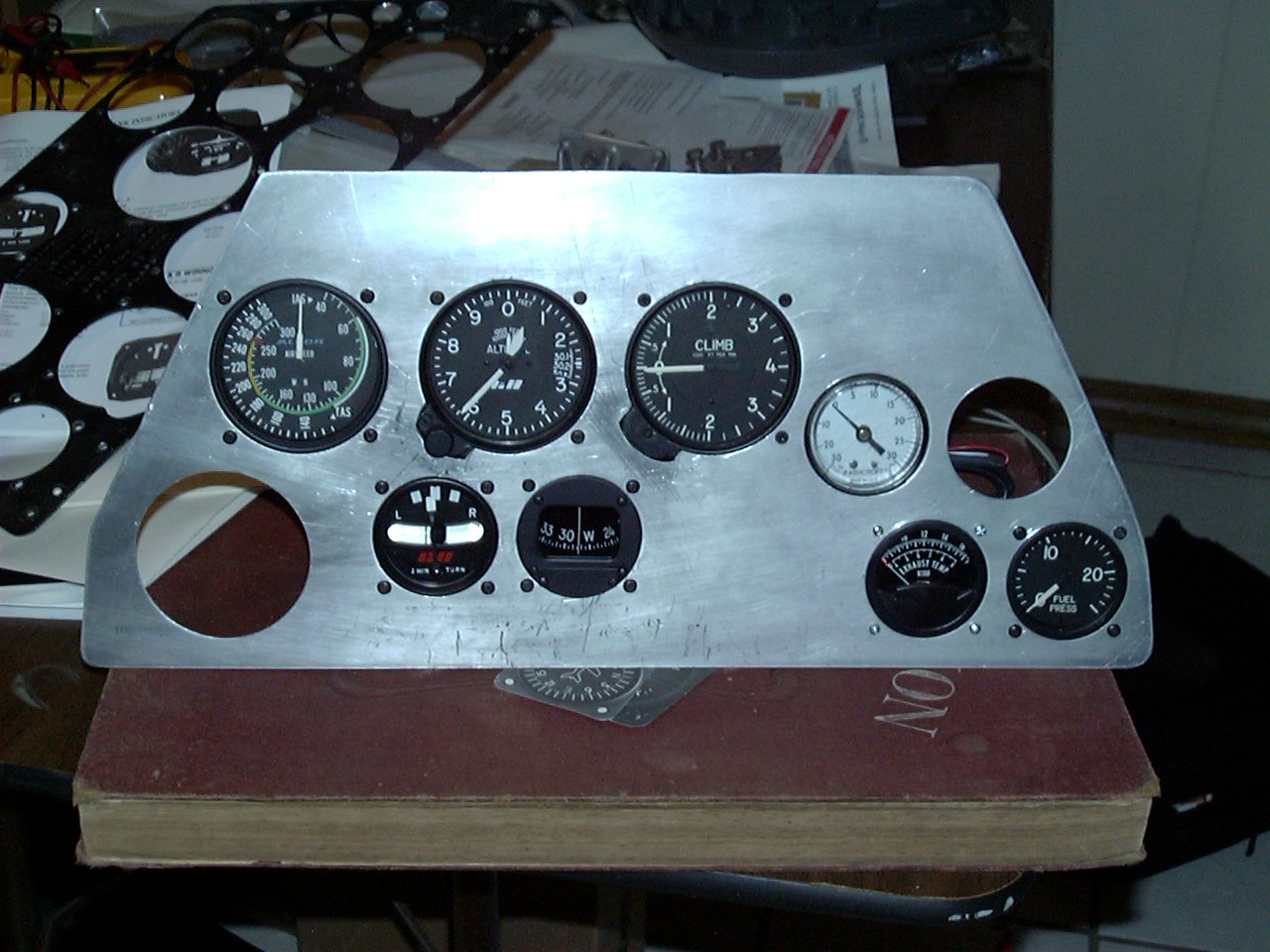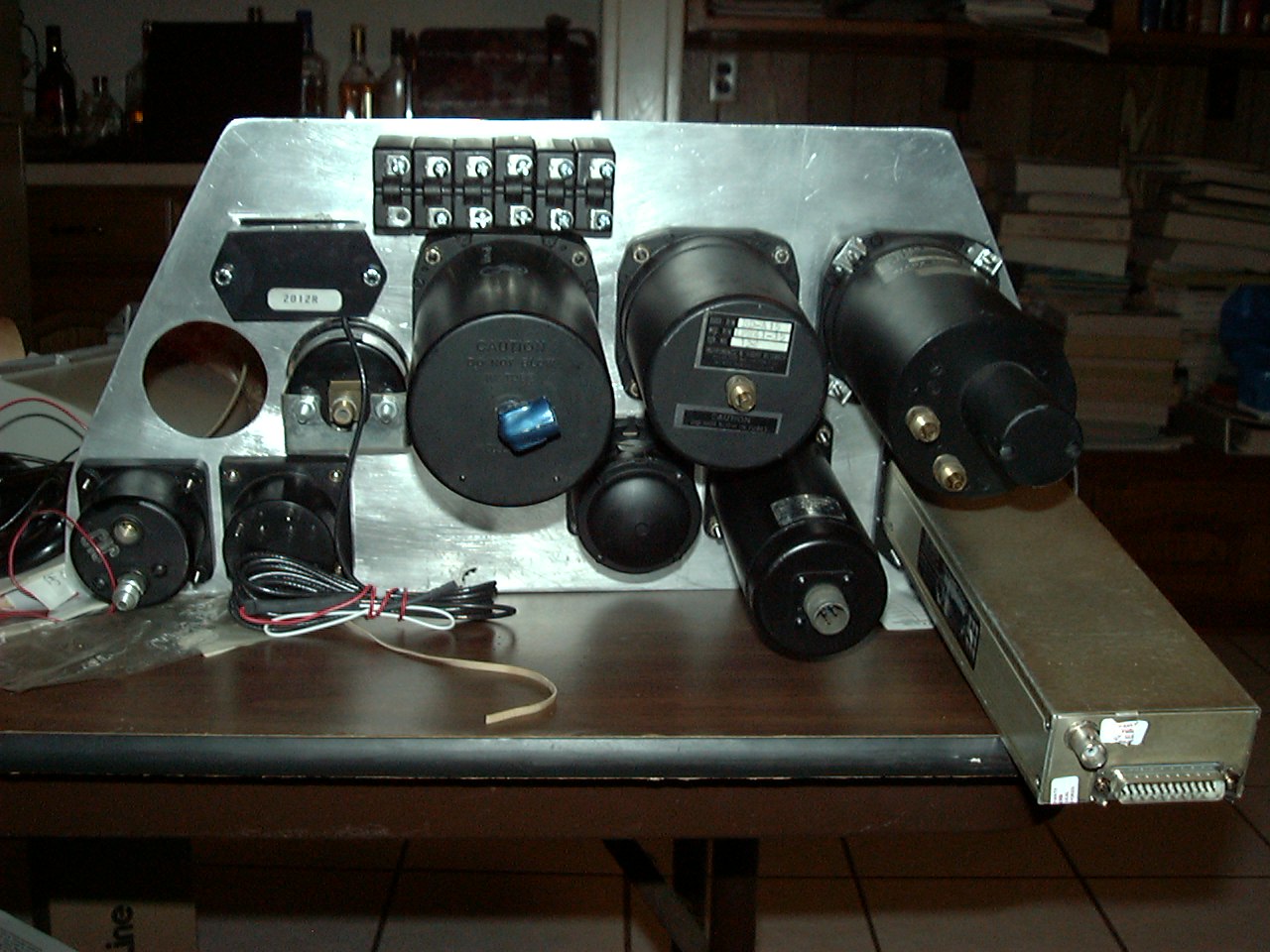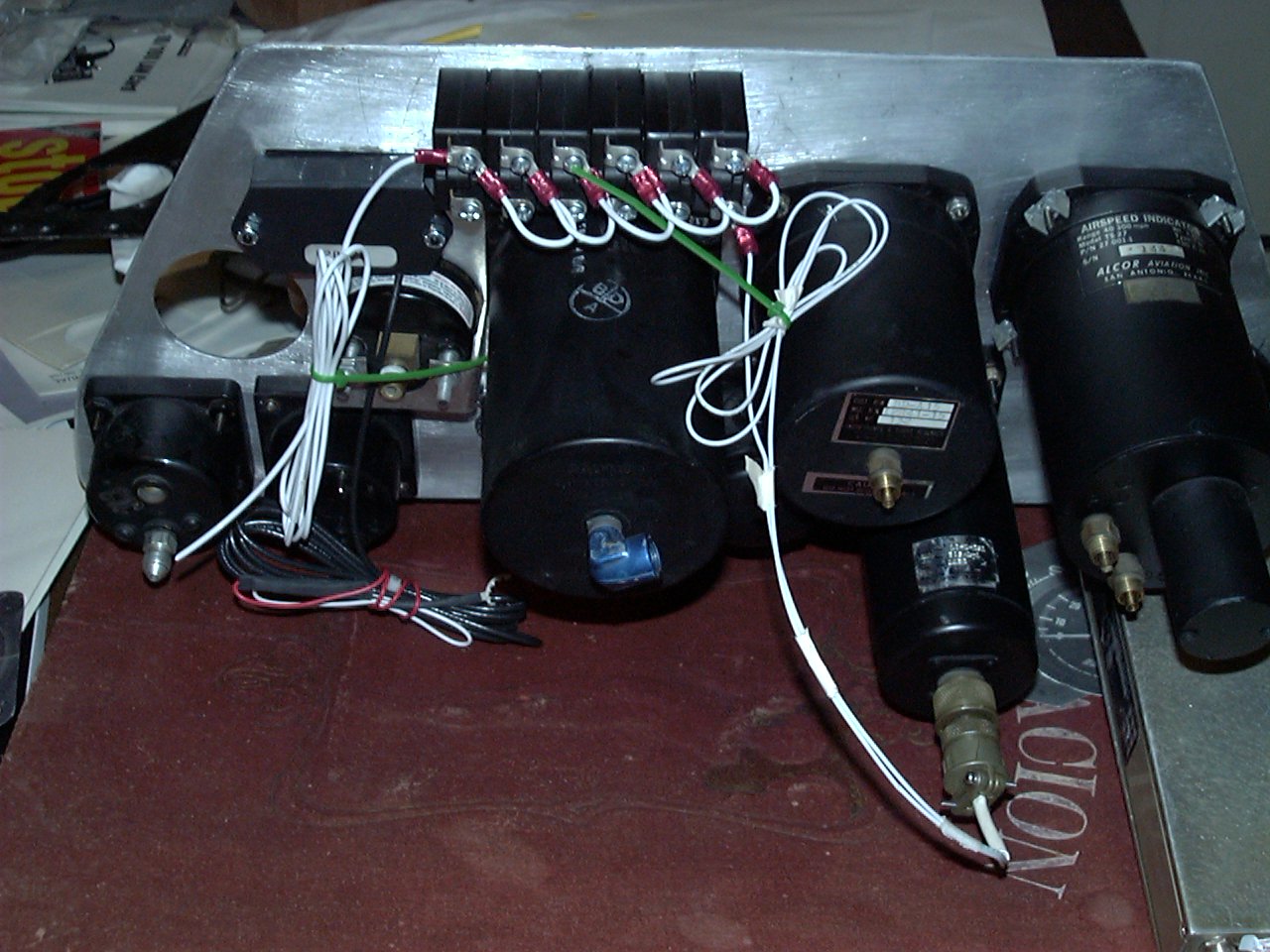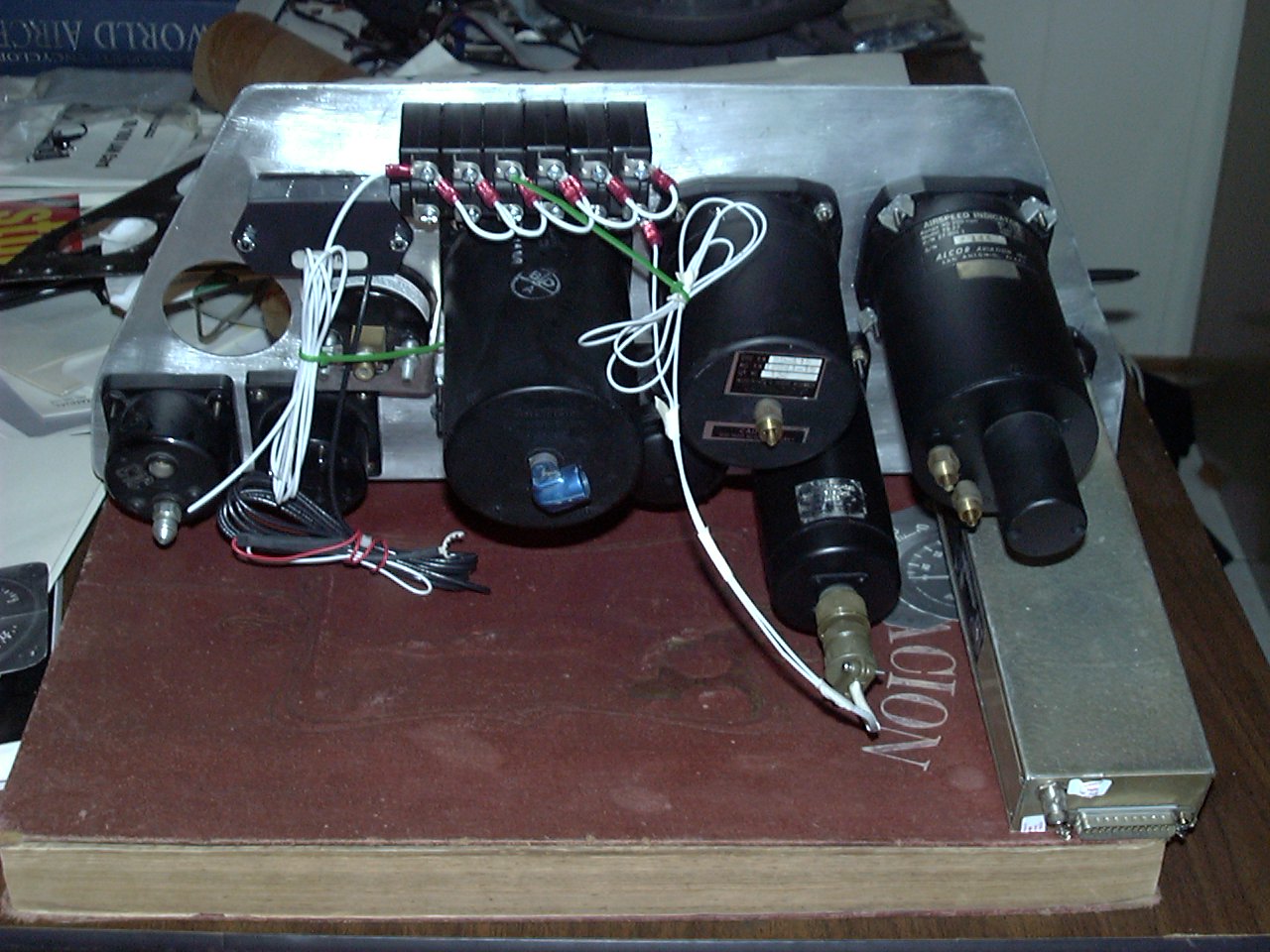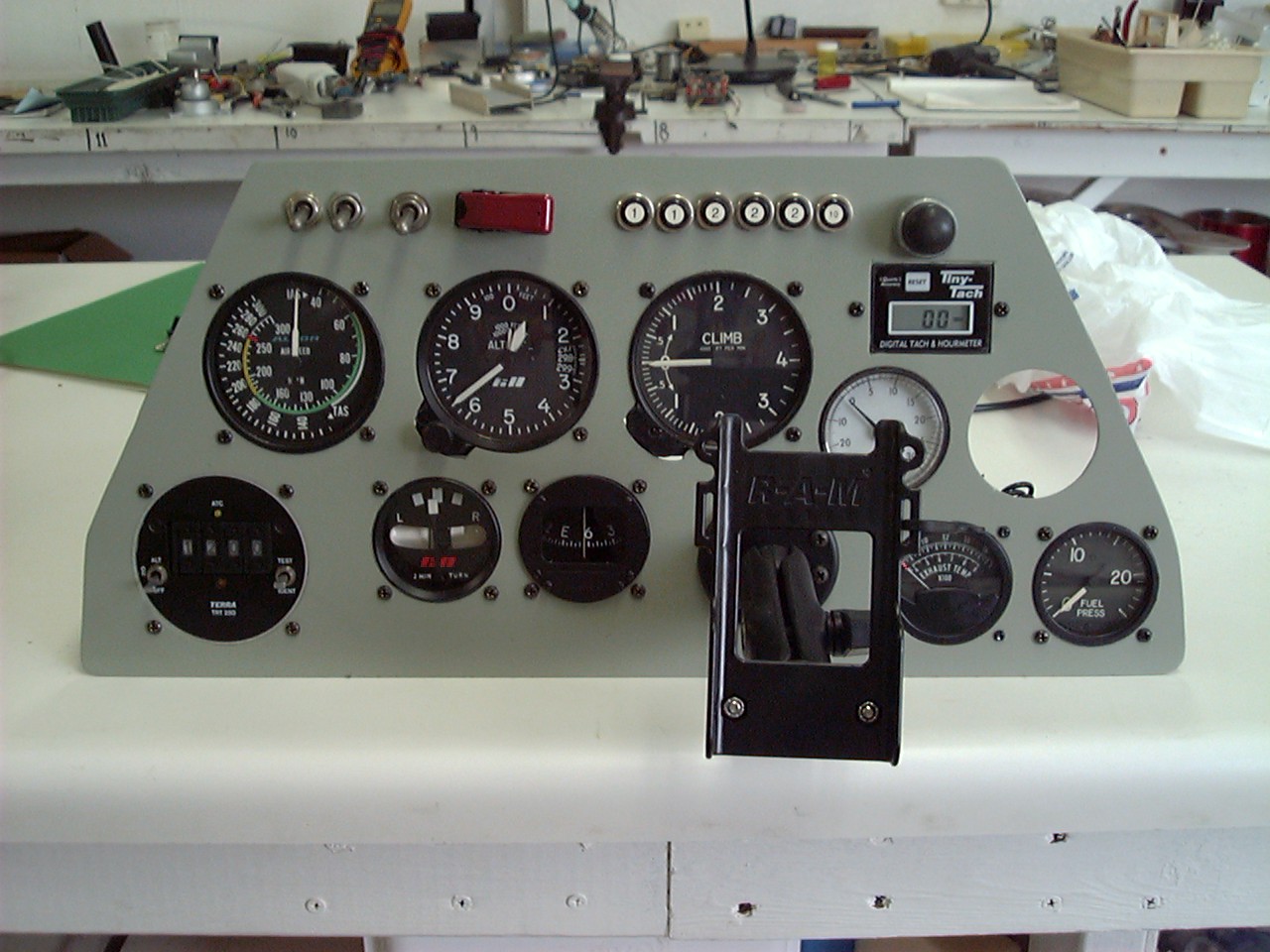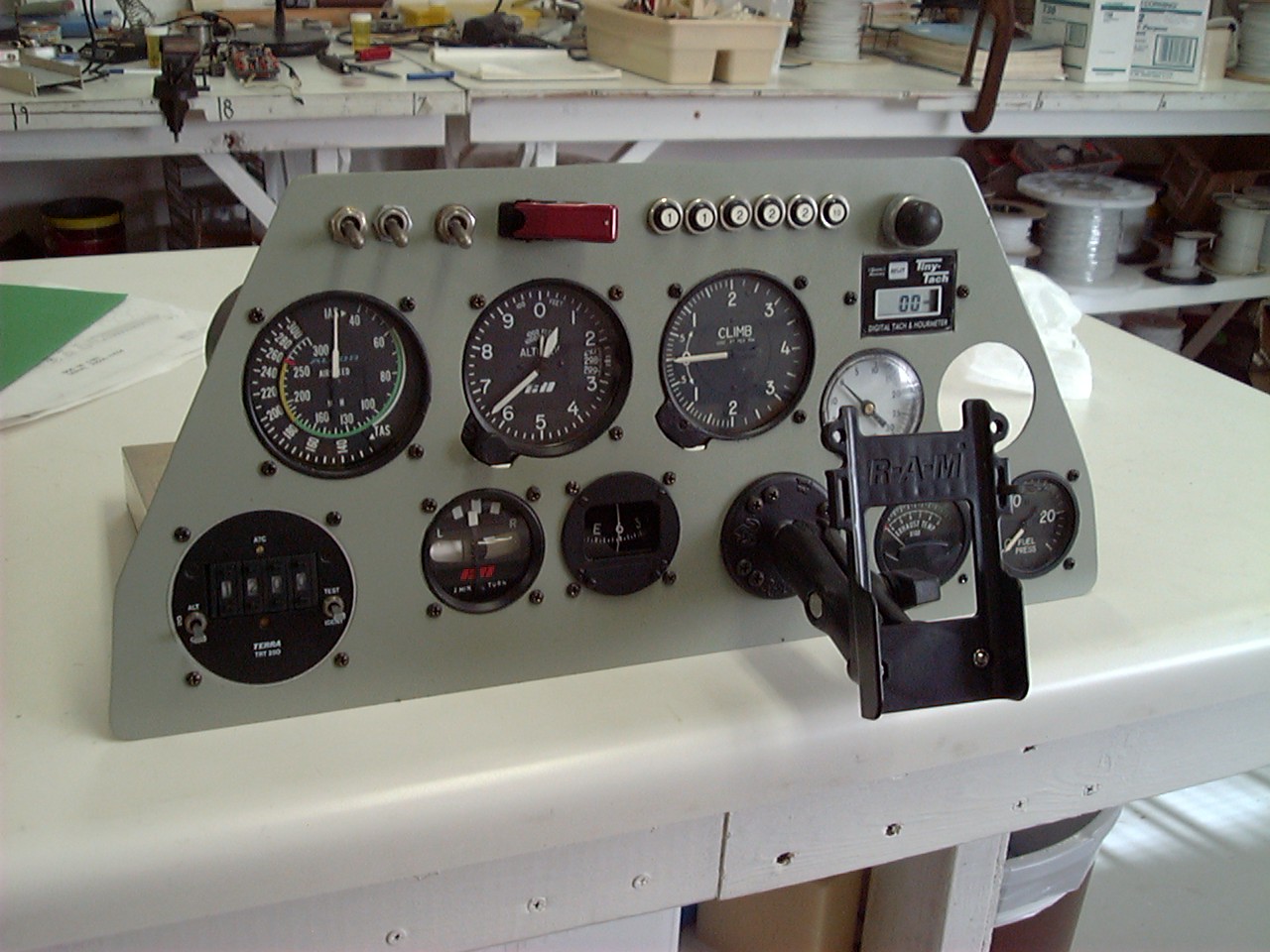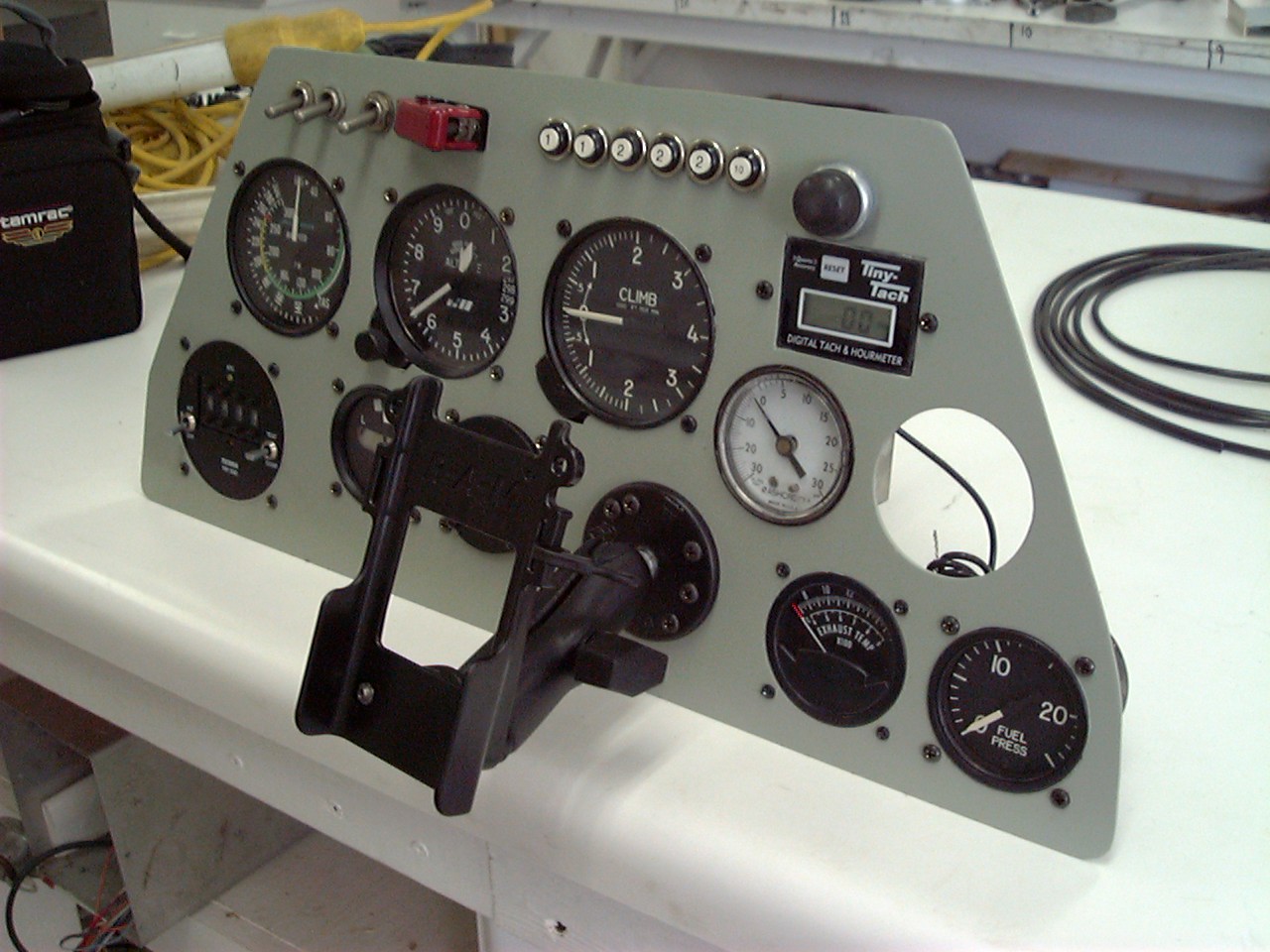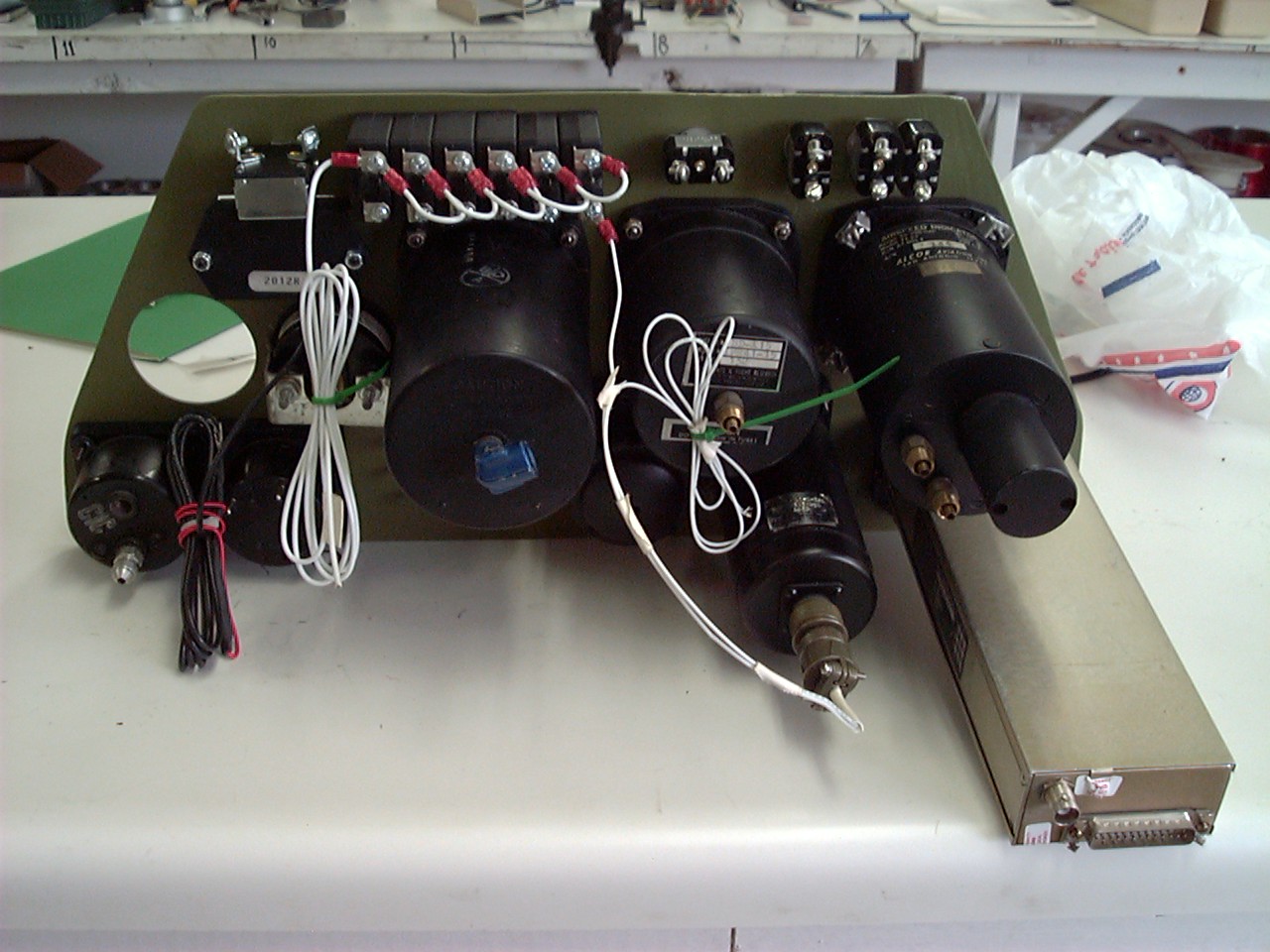The pictures below show
the state of N522PR after reinstallation of the upgraded engine, upgrading
of the landing gear to the Alturair solid metal landing gear, removal of the
rear canopy and removal of the instrument panel and instruments for recertification
and design of a new instrument panel. The two-piece engine mount was reinstalled,
replacing the one inch spacers with one-inch square bars of 7075-T351, the
toughest aluminum I could find (I think it's the toughtest alloy for aircraft
use available.) Since these pictures were taken the fuel boost pump was installed
and the fuel system replumbed and connected with brand new AN fittings. Most
of the old electrical wiring has been removed, and the new panel is finished
(see below).
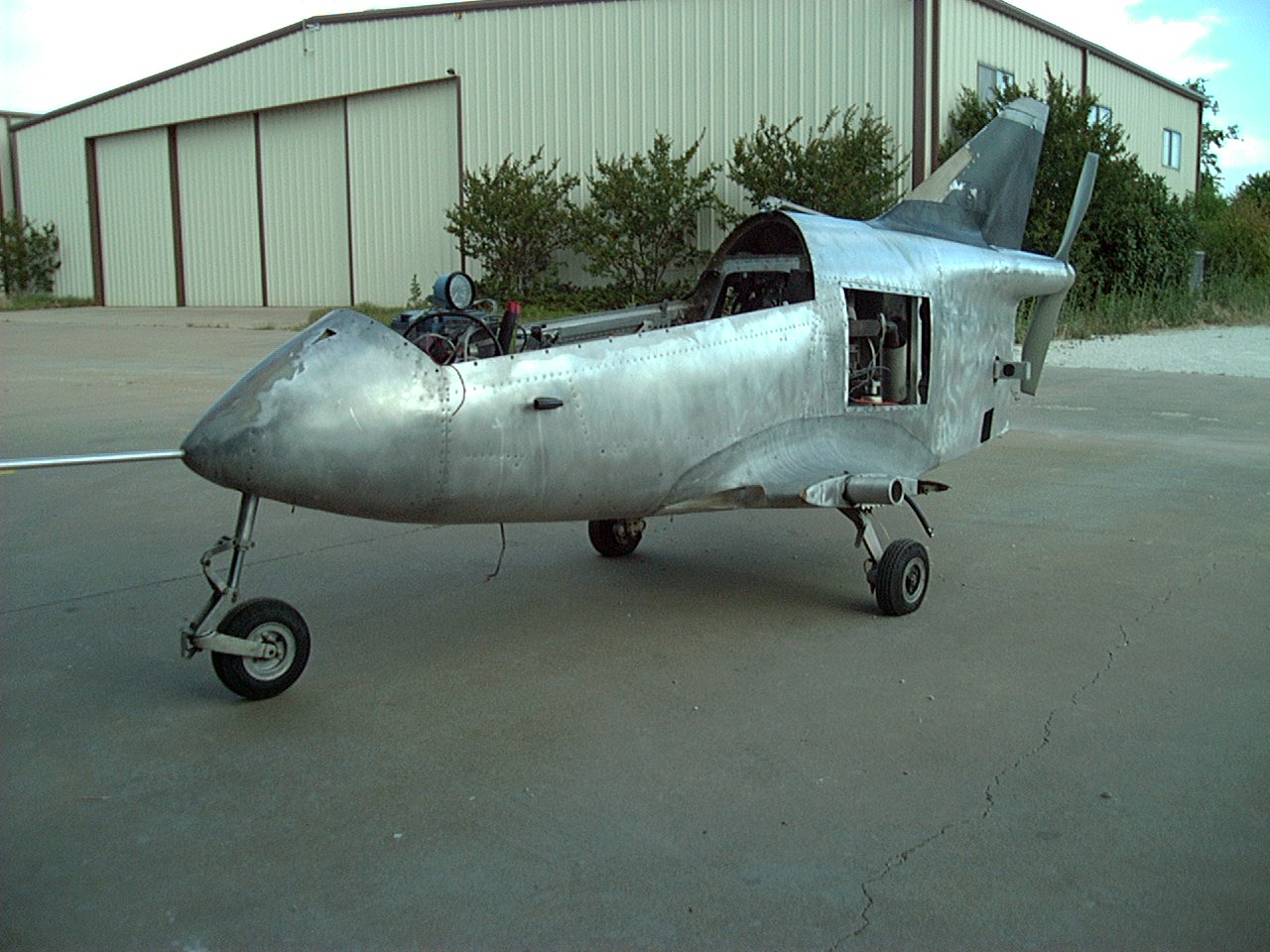
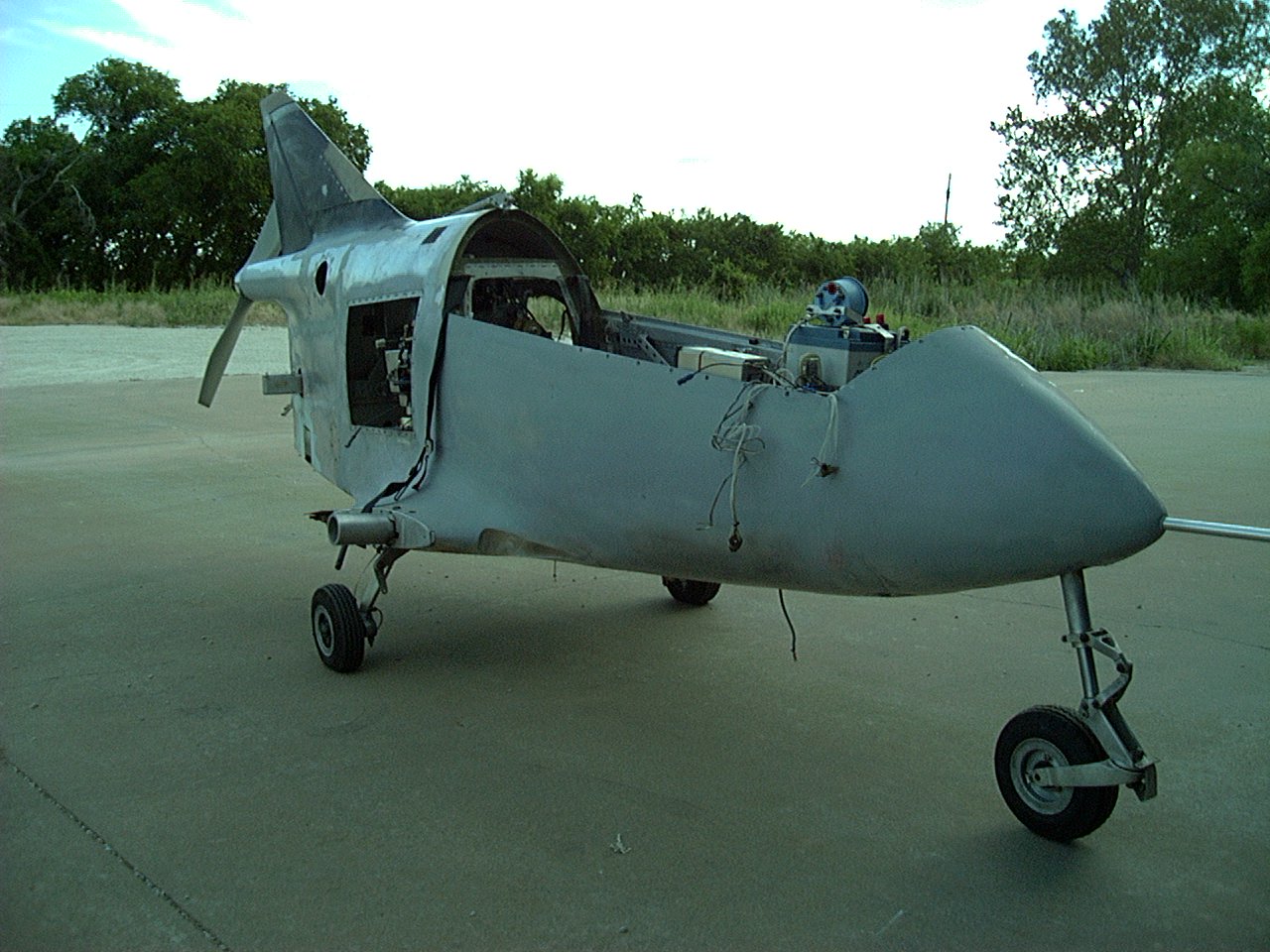
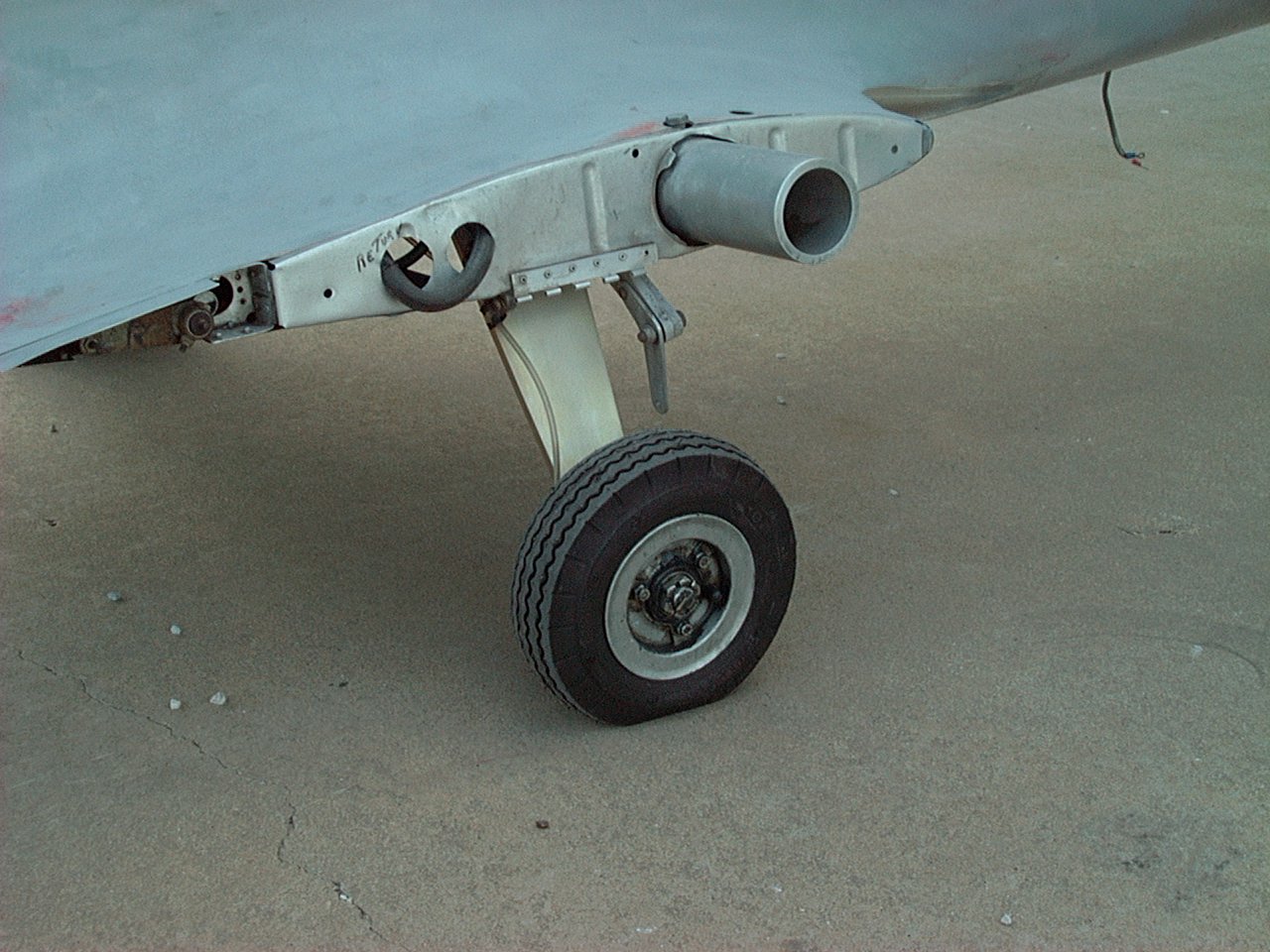
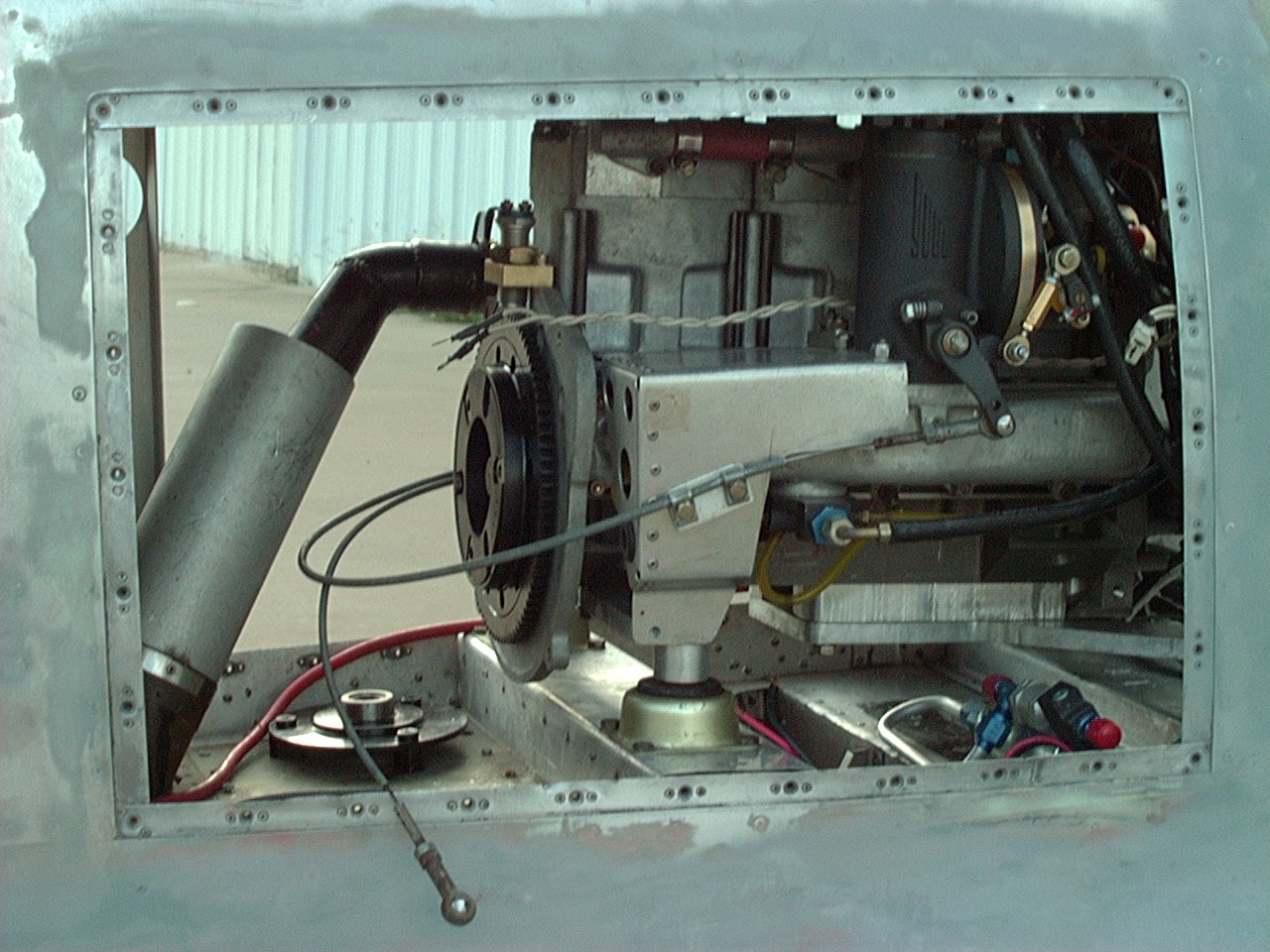
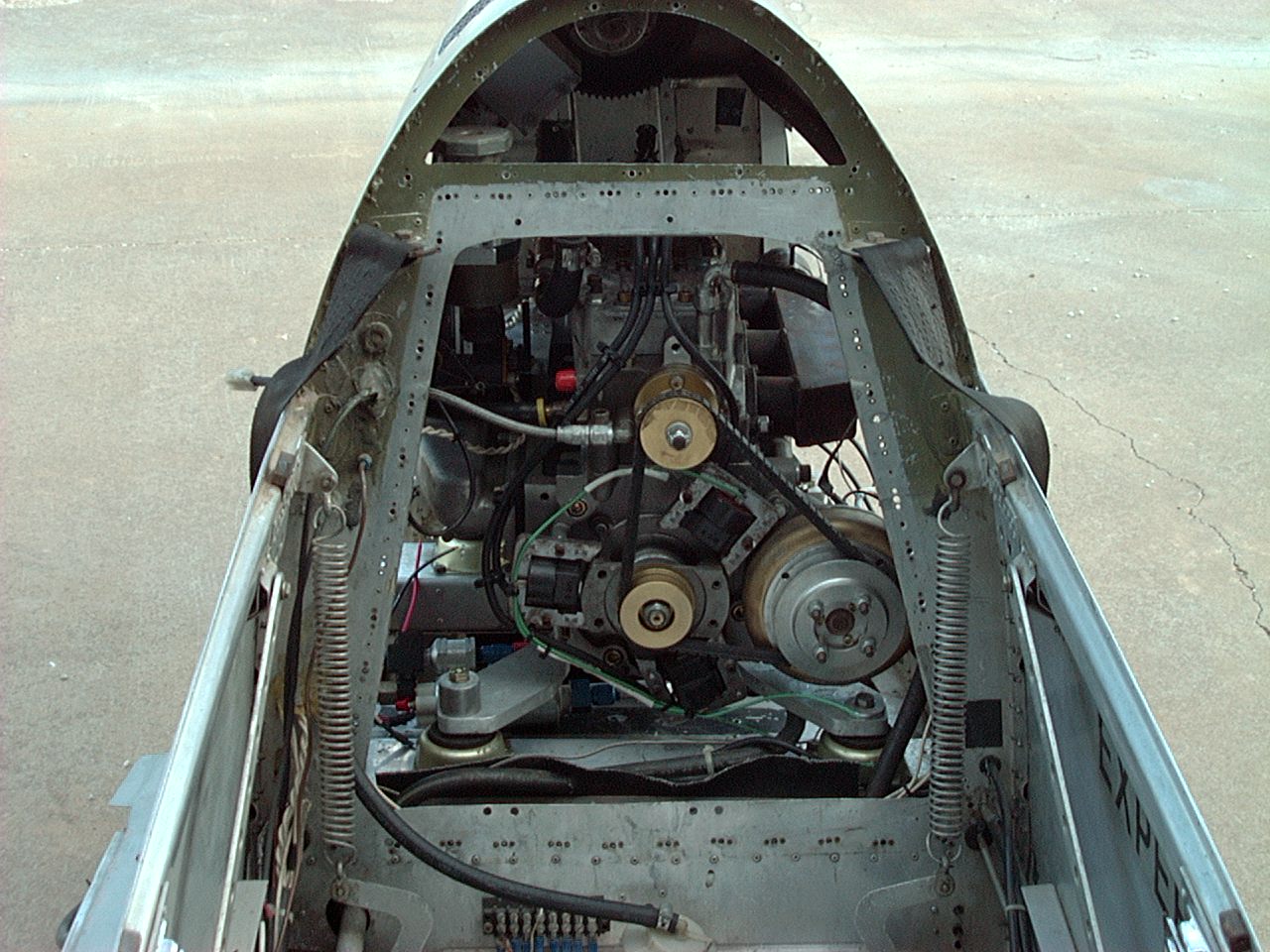
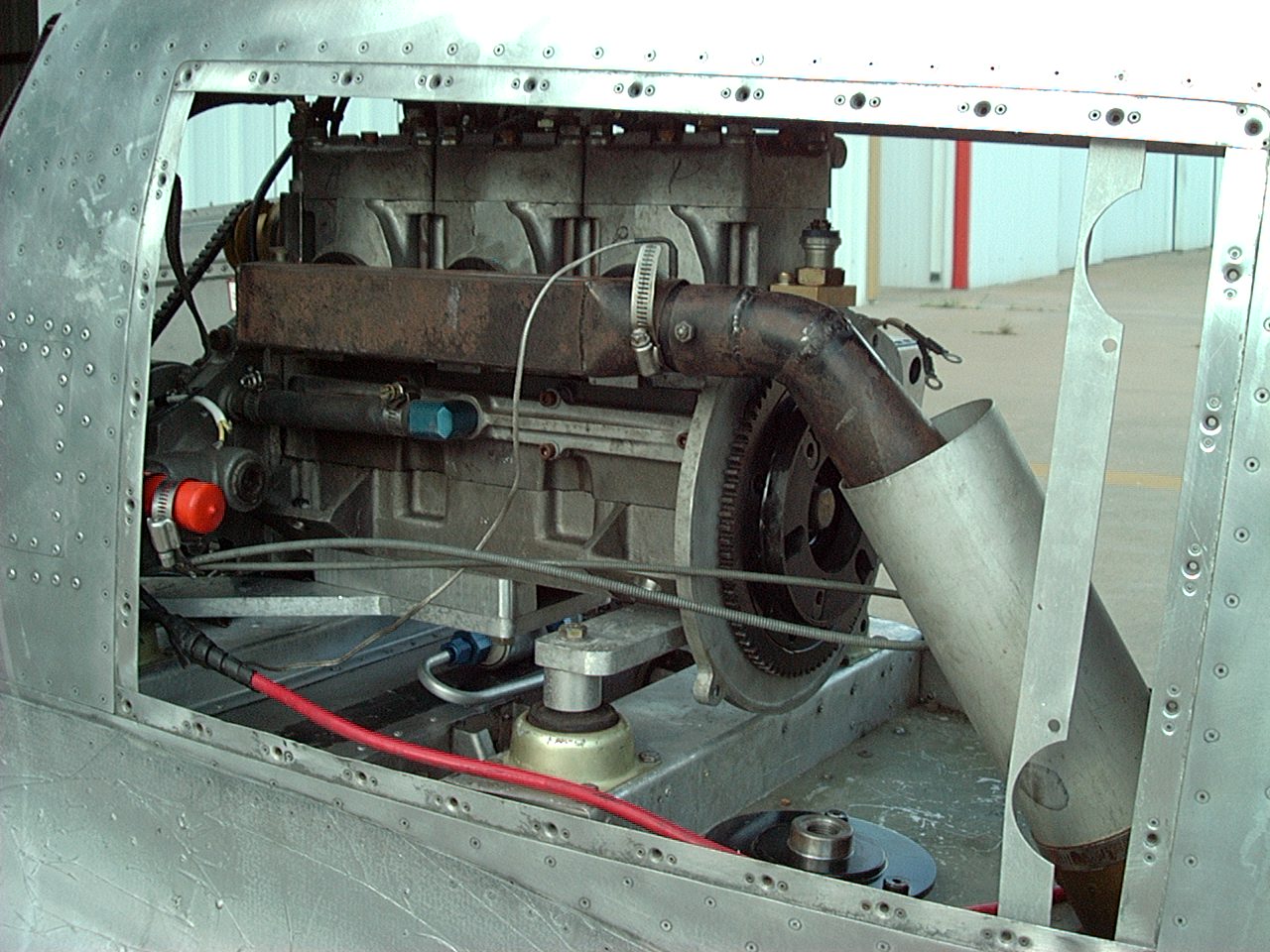
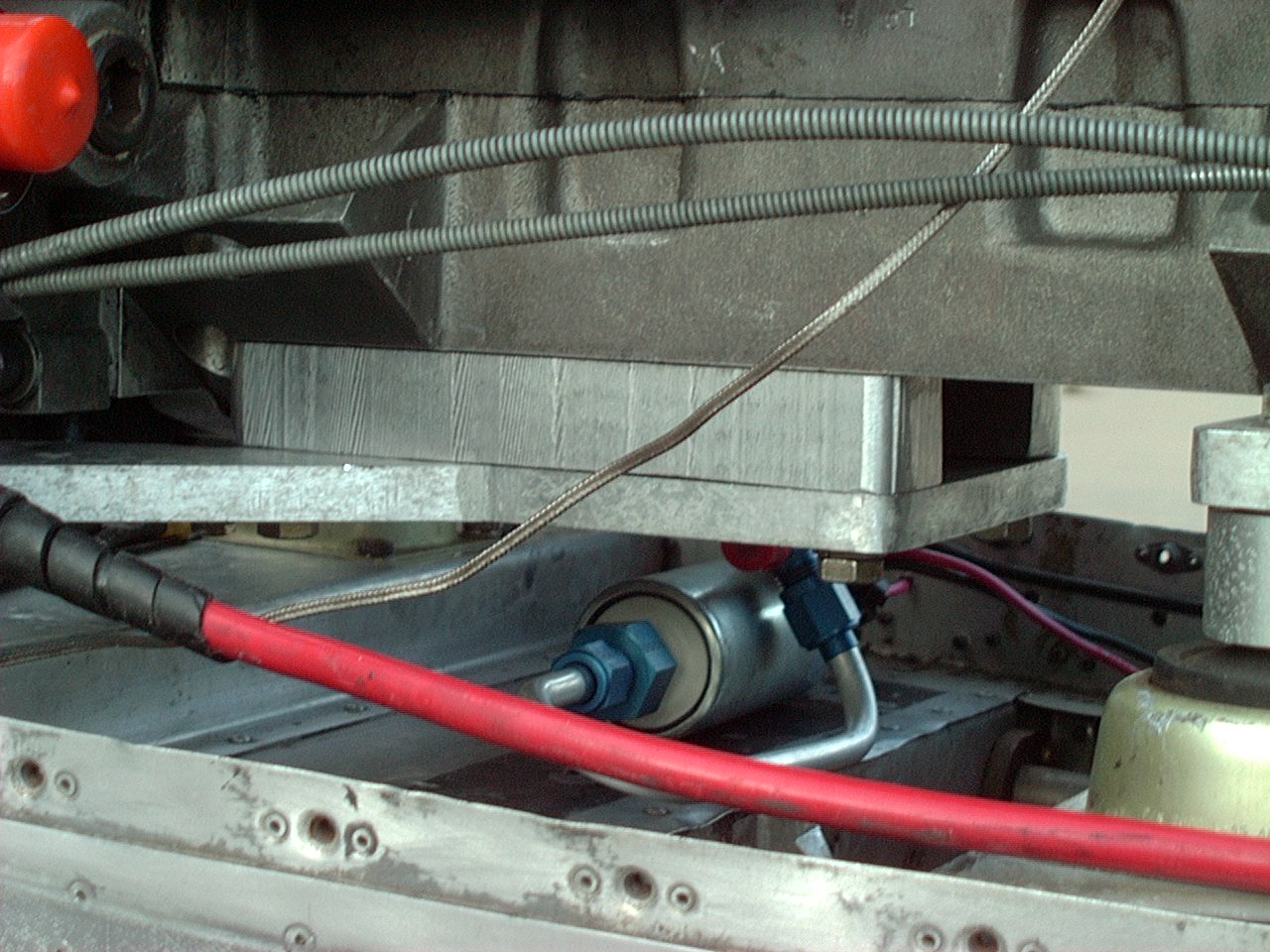
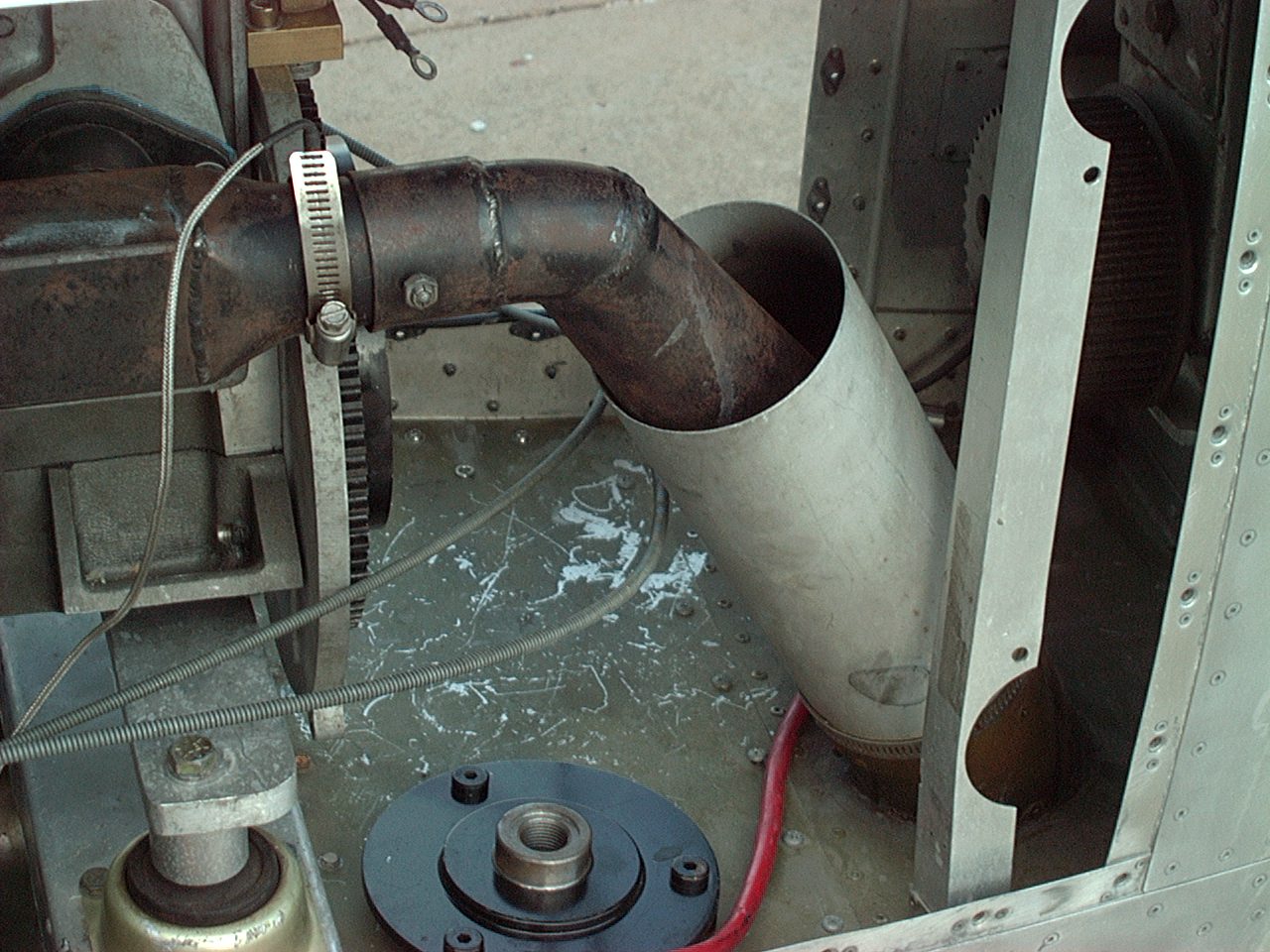
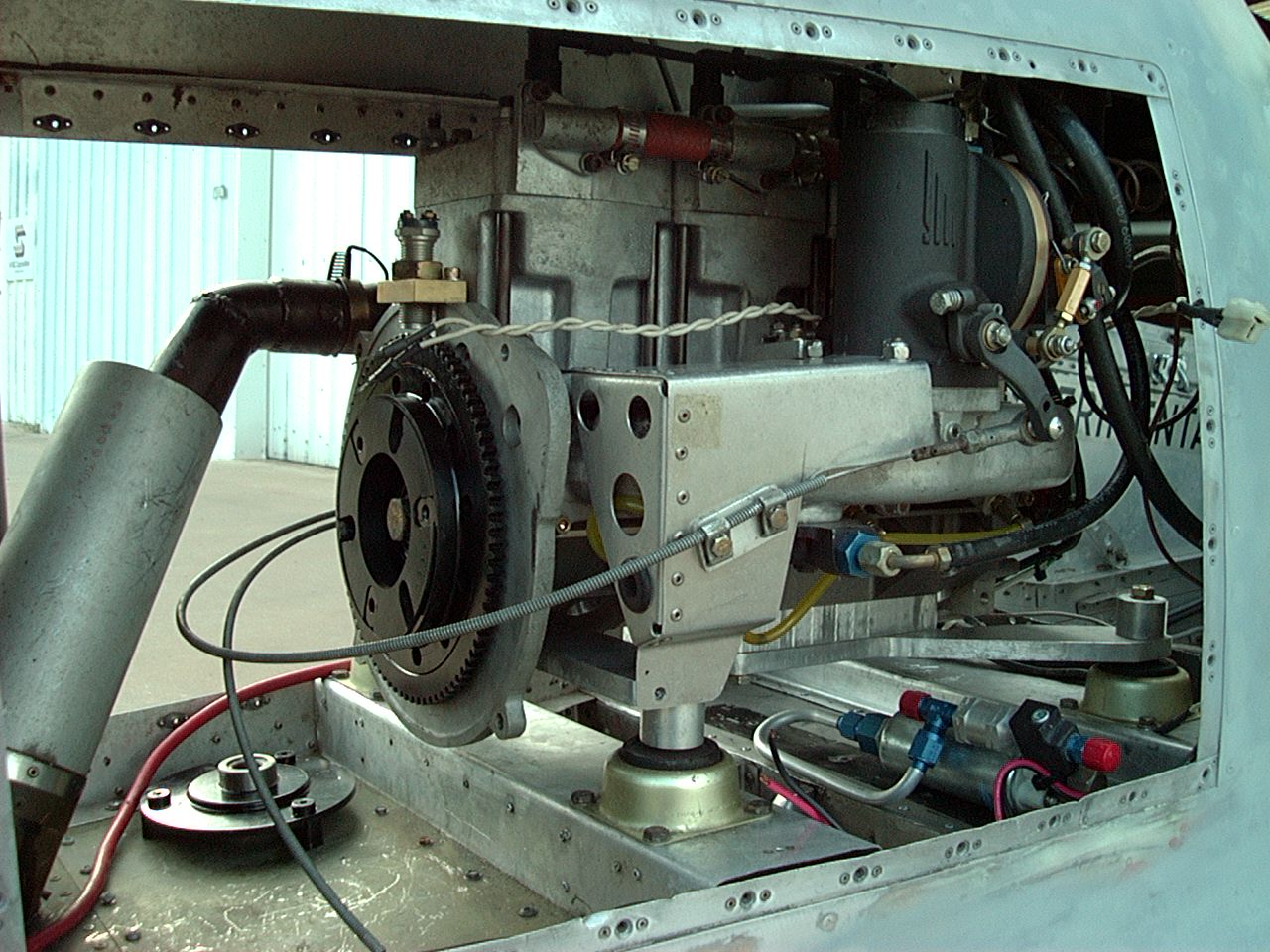
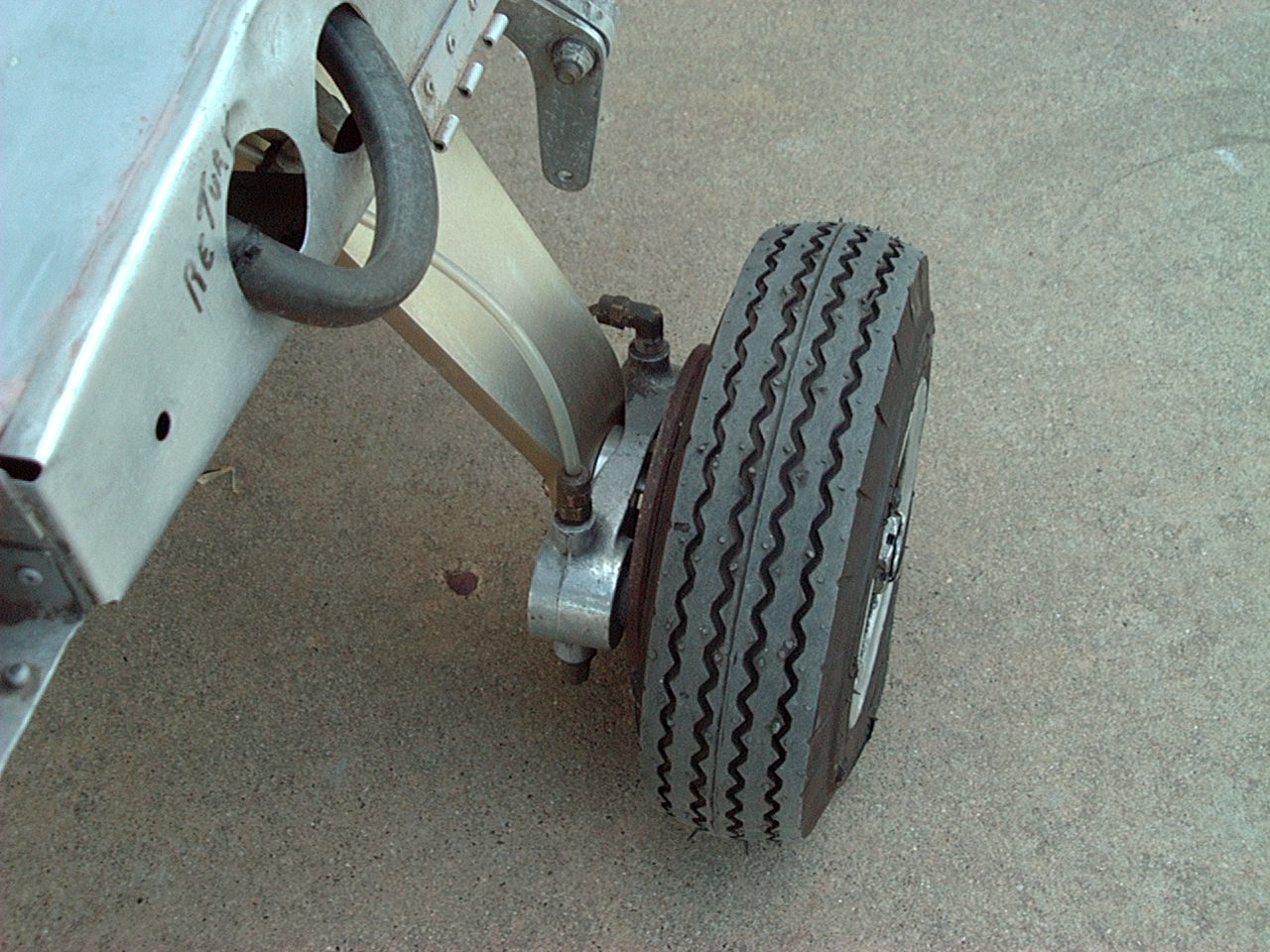

In
these pictures you can see the ongoing work with the composite filler, SuperFil,
to fill all the dimples, seams, etc. and level any surfaces that may not be
completely smooth. This type of composite filler is extremely light (3.6 lbs
per gallon, cured, and all the work you see here was done with a pint
kit.) It goes on just like Bondo, but unlike Bondo it doesn't shrink or crack
over time. It can be sanded and shaped just like Bondo. Just make sure you
wear gloves. If you look closely and compare with the pictures below you can
see that I have also removed all the surface corrosion and all the dark area
in the metal. I did that with ultrafine Scotchbrite pads on a velcro holder
with my pneumatic drill. Also, sanding sponges work great. The new prop from
Prince Aircraft is installed, the brakes have been completely overhauled,
new tires installed, and the engine is out because it is being overhauled
and updated with fuel injection and newer internal components and accessories.
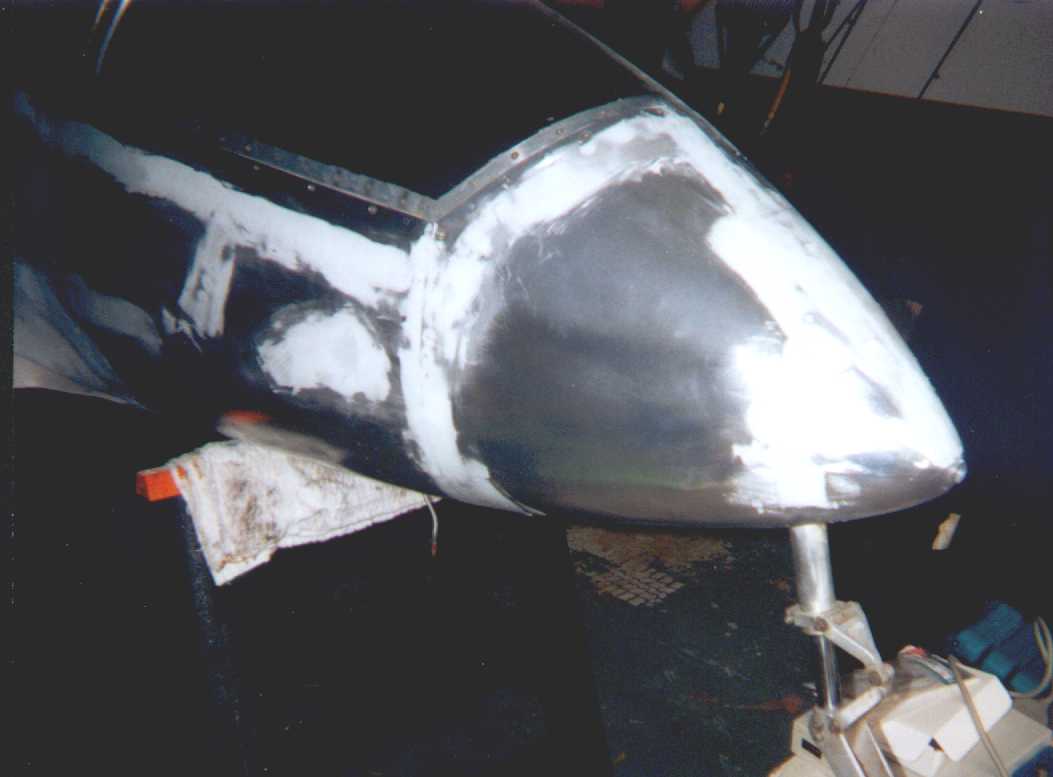
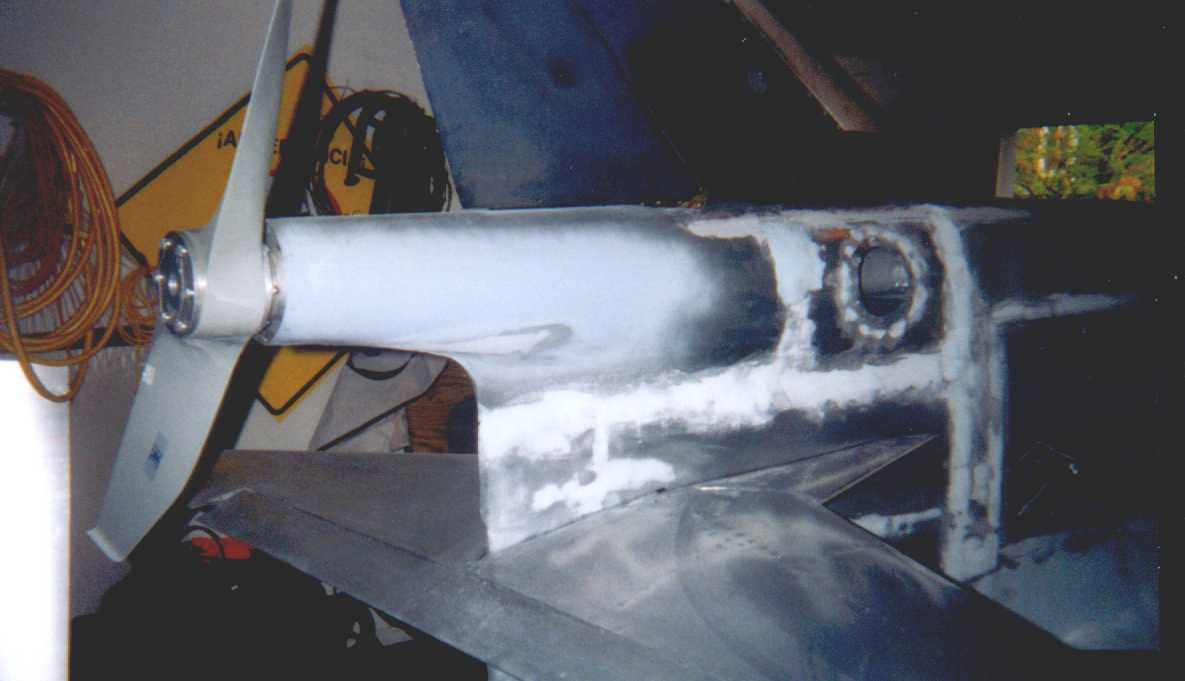


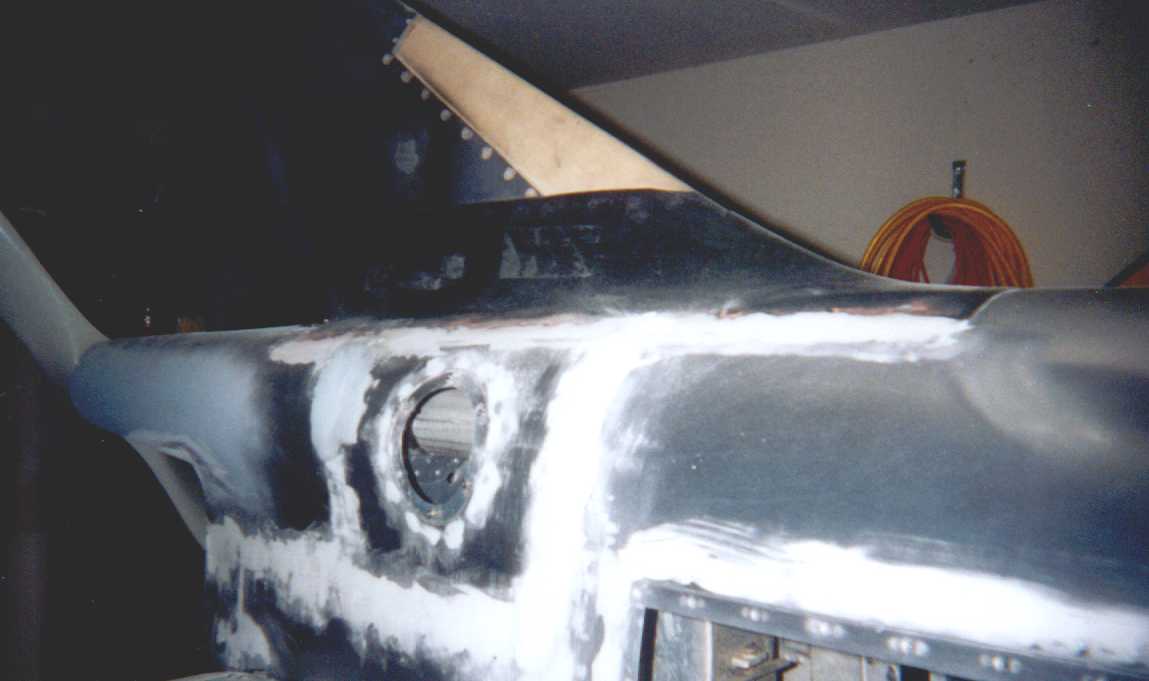
BD-5
Serial # 22 was bought near Oakland, California. These pictures are a little
old but they accurately reflect the state of the airframe. SN #22 was bought
as "scrap" from Tom Johnson, disassembled, etc. The registration and airworthiness
certificate were turned in and the aircraft was deregistered, as per instructions
from the widow of the original builder, who passed away some time ago. It
came with a custom BD-5 trailer built from Bede Aircraft Corp. plans, which
needs extensive refurbishing and is in dire need of a few coats of paint.
It will be my job to assemble the aircraft, register it again, get a new temporary
airworthiness certificate and fly off the test hours with the help of a professional
test pilot. After that, I hope to take the bird to Sun-N-Fun and Oshkosh in
2000. My ultimate goal to fly it from the southern tip of Florida to Luis
Muñoz Marín International Airport in San Juan, Puerto Rico (and
back, of course) sometime during the year 2000.
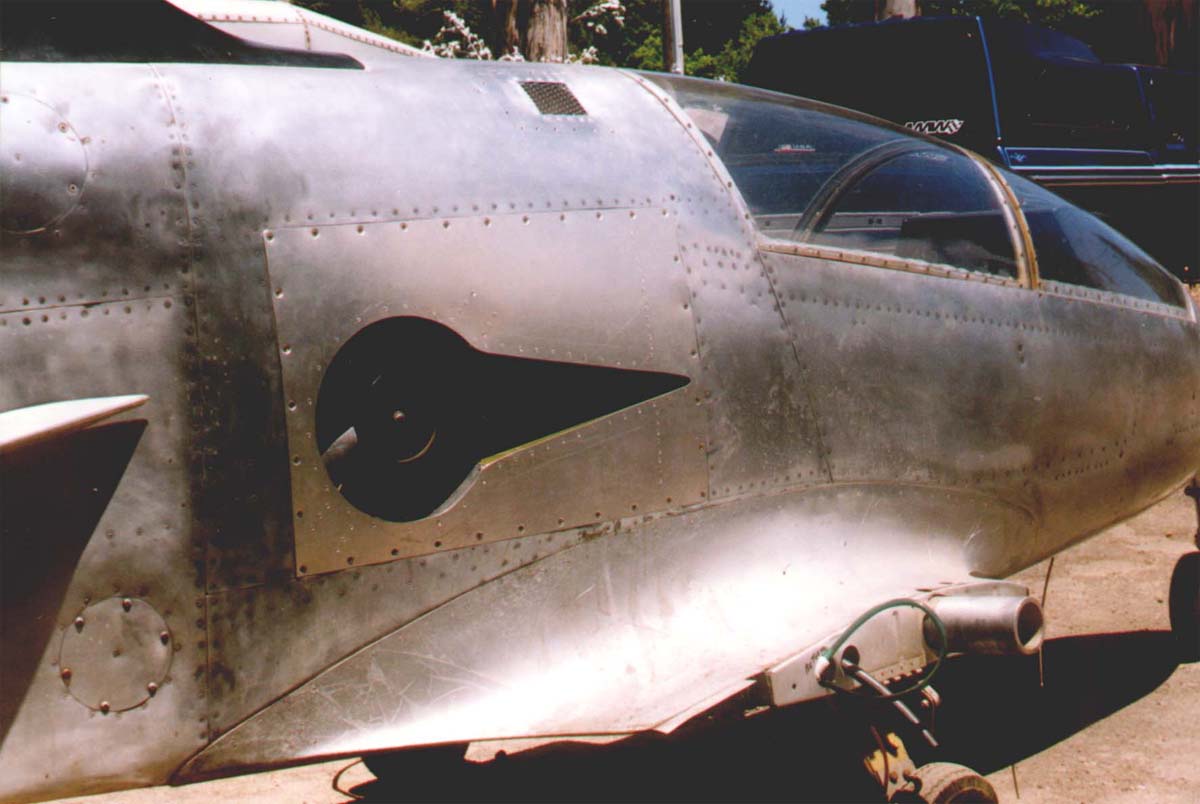
The
previous owner of SN #22 was an engine expert. He used the BD-5, with the
help of Keith Hinshaw and a few other pilots, as an engine test bed for his
projects. In this picture you can see the solution that he came up with for
controlling engine compartment temperature. The right engine compartment door
has been modified with a NACA duct and an electric fan. This fan is operated
only when the aircraft is on the ground. You can't see it on this picture,
but the airflow into the engine and engine compartment is through ducts at
the root of the wing. In this picture you can also see that the fuselage is
unstretched. The aircraft has never had weight and balance or CG problems.
You can't see it in this picture, but the cockpit is fully equipped with instrumentation
and avionics, and is almost IFR-capable (needs an attitude indicator and navigation/strobe
lights).
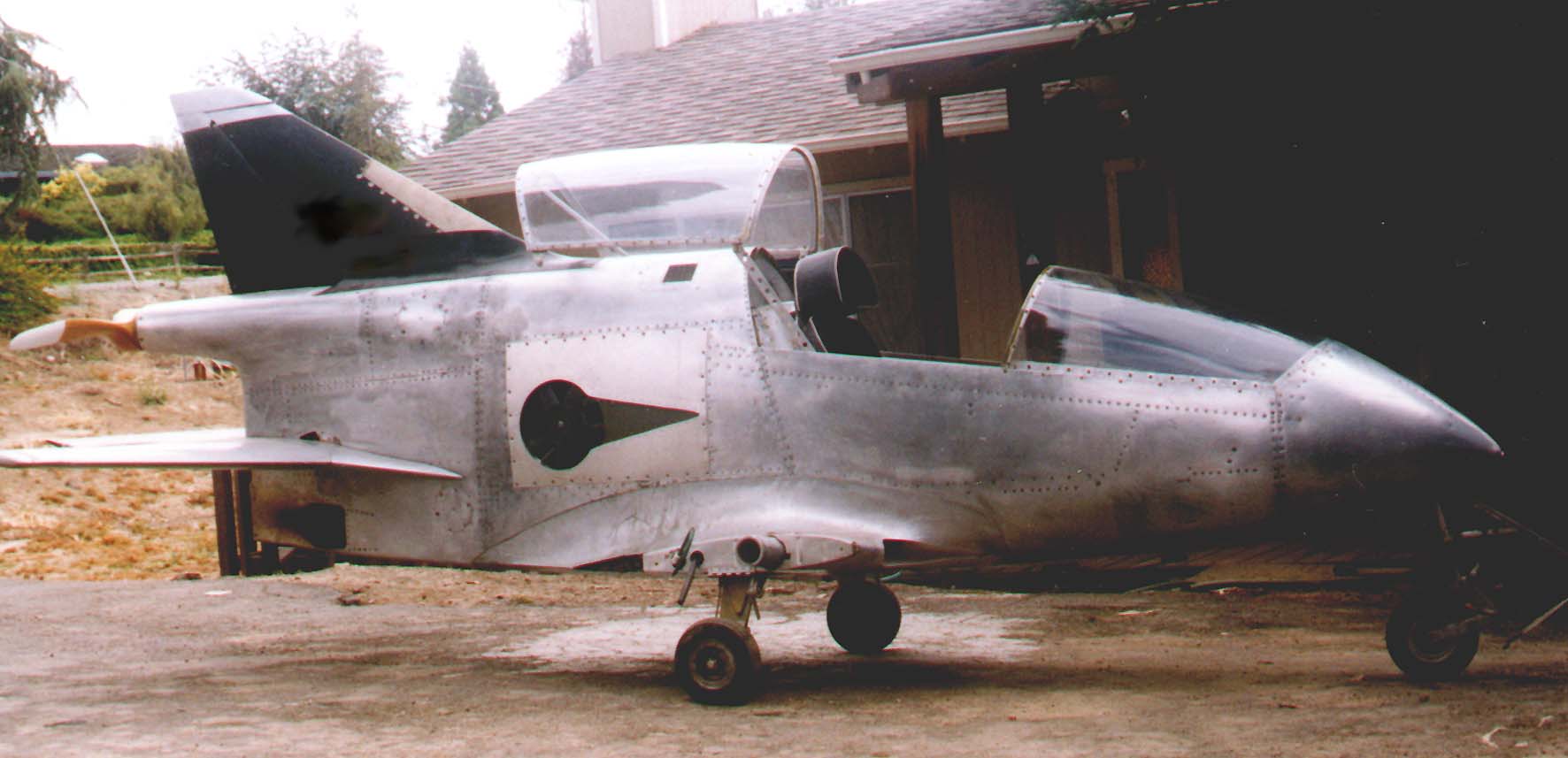
This
image shows a more complete view of the airframe, with the engine compartment
cooling fan. You'll notice that it as a flush comm antenna on the tail, like
the one I installed in the vertical stabilizer of my previous kit (the installation
is covered in the construction log available from the main page). The propeller
is custom made, 48" diameter, wood. If you take a close look, you can see
that behind the spar, in the wing root, there are two fuel lines. This
aircraft is set up for fuel injection, with a fuel feed line coming from the
fuel tank pickup and a return line coming from the custom throttle body fuel
injection system that was installed on the engine (last one was an AMW three-cylinder
engine). You'll also notice a louver under the rear canopy (above the engine
compartment door, also visible in the picture above this one). This louver
draws air into the fuel injection system to equalize the air pressure inside
the engine compartment for the fuel injection system. Also, the fuselage today
has a light surface corrosion which has to be removed. The black paint on
the vertical stab and rudder is primer. I plan to remove all primer and polish
the entire airframe after treating it with Alumiprep.
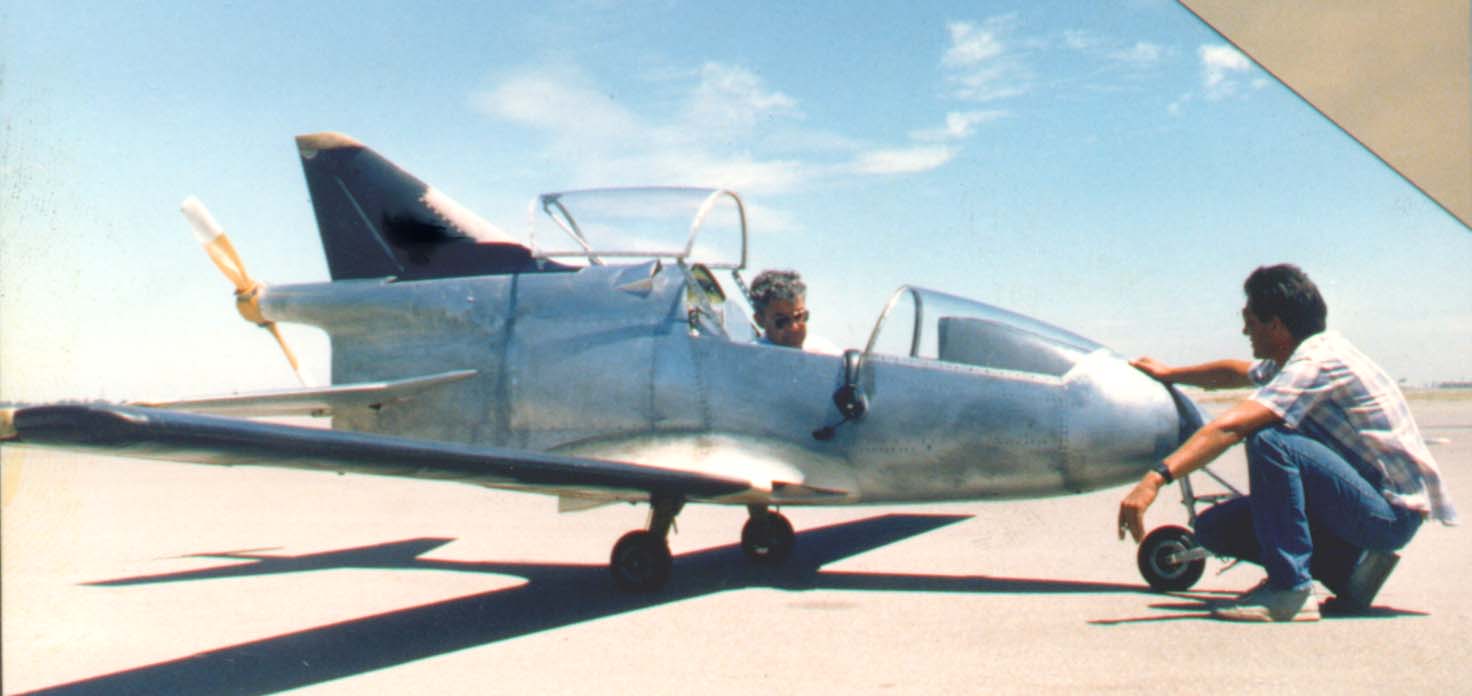
This
is a picture of Keith Hinshaw and Tom Johnson, the previous owner of this
BD-5. Keith is in the cockpit, Tom is to the right. Keith was involved in
the flight testing of this aircraft as an engine test bed. He also reviewed
the construction and upgraded a number of the components, such as the landing
gear.

Another
view of SN # 22. Not much to see here because of the lighting, but a tiny
bit of the engine installation can be seen.
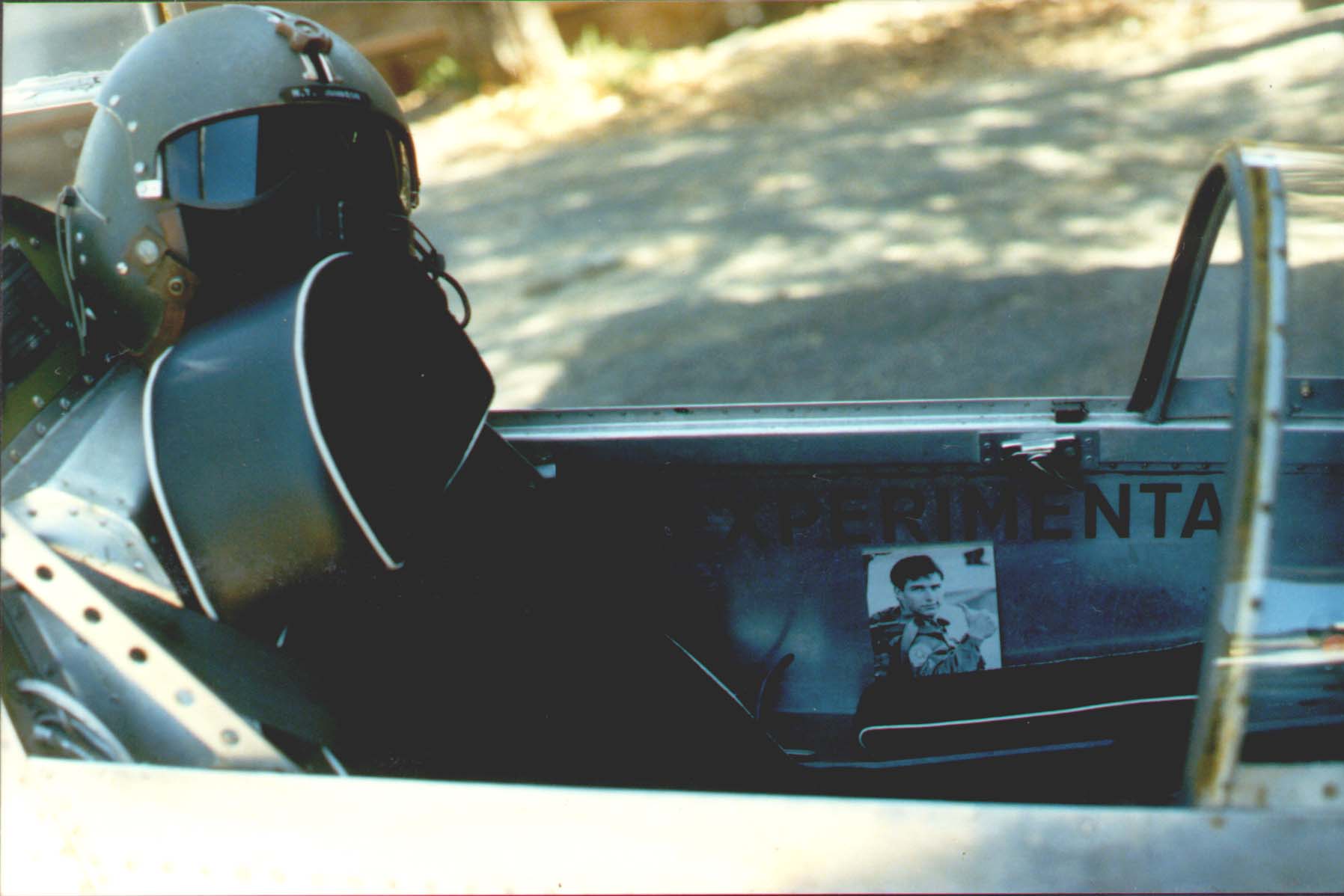
A
view of the cockpit area of SN # 22. The canopy latching mechanism will be
replaced with a Hartwell latch that is already on order. The person
in the picture is Keith Hinshaw during his military aviation days. One interesting
thing you can see here is the addition of an aluminum compartment behind the
seat, attached to FU-1. SN #22 has fully functional water and oil cooling
systems with custom radiators. The compartment behind the pilot holds the
main radiator for water cooling. Air flow is channeled through an opening
in the forward wing root, into this chamber, through the radiator and out
the back with the rest of the hot air and exhaust. It worked extremely well,
but it cuts down on badly-needed space for me in the cockpit. Either I get
shorter, or I use an air-cooled engine. Haven't decided yet, but I know it
will fly.


Last Update 9/15/2001
Copyright © 2000 by Juan Jiménez - All rights reserved.





